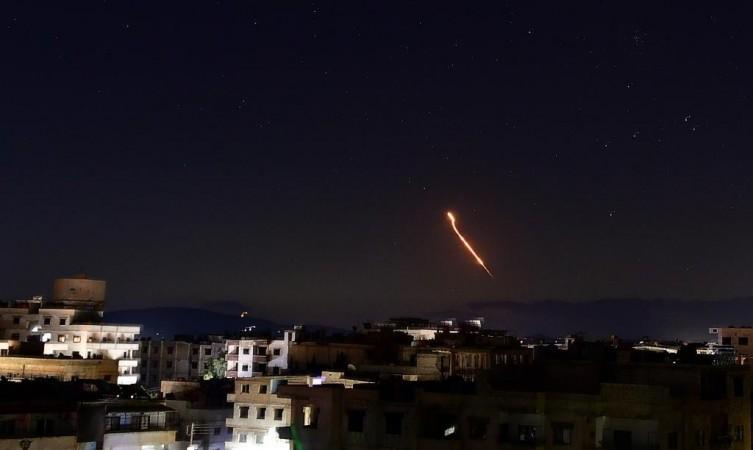
The June 2025 Israeli precision strikes on Iranian nuclear, military, and political targets have fundamentally redefined the contours of modern warfare. Over a dozen critical sites, from deeply buried uranium enrichment facilities to hardened missile depots, were neutralized with a level of accuracy that stunned the world. Enabled by the seamless integration of advanced technology and a robust, multi-layered intelligence network, this operation marks a pivotal shift in the character of conflict. For global powers and aspiring military leaders, it serves as both a warning and a blueprint for the future.
Crucially, these strikes were not a singular event but the culmination of years of meticulous planning, real-time adaptability, and, above all, the fusion of human and technical intelligence. Israel's achievement was not merely in the deployment of cutting-edge systems but in its ability to convert intelligence into decisive, actionable outcomes. This operation sets a new global benchmark for military strategy in the information age.
It's important to dissect the critical components of the operation, particularly the evolving role of HUMINT, while exploring the challenges, integration, and future of intelligence in warfare.
HUMINT: The Indispensable Edge
Despite the exponential growth in technical collection satellites, AI-driven analytics, and cyber tools precise, actionable, and continuous Human Intelligence (HUMINT) remains the bedrock of operational success. In the June 2025 strikes, it was not a single agent but a resilient network of well-placed sources inside Iran who made the difference. These operatives provided detailed blueprints of underground facilities, tracked leadership movements, and relayed last-minute changes in target schedules information that no sensor or algorithm could independently verify.
Former Mossad Chief Tamir Pardo aptly summarized: "Technology amplifies our reach, but without human sources, we're blind to intent."
Case in point is that during the operation, HUMINT operatives identified vulnerabilities in Iran's underground defenses, such as ventilation shafts and access points, enabling Israel to direct bunker-busting munitions with surgical precision. This was not a one-off feat but a continuous, adaptive process: as targets shifted, HUMINT provided real-time updates, ensuring every strike counted.
The infamous Stuxnet operation in 2010 foreshadowed this symbiosis. Then, as now, it was the fusion of human insight and cyber capability that delivered results. In 2025, this synergy reached its zenith.
Geospatial Intelligence: The All-Seeing Eye
Geospatial Intelligence (GEOINT) offered Israel unparalleled situational awareness. High-resolution imagery from satellites, drones, and reconnaissance aircraft enabled the identification of camouflaged and deeply buried targets. Thermal and spectral imaging further revealed operational activity patterns such as increased vehicle traffic or heat signatures at missile sites providing crucial cues for strike planners.
Michael O'Hanlon of the Brookings Institution observed: "In conflicts where speed and precision are paramount, GEOINT acts as the ultimate enabler." A case in point: is that GEOINT was instrumental in targeting Natanz's underground centrifuge halls. Satellite data revealed subtle terrain disturbances indicators of new subterranean construction while commercial providers like Maxar Technologies supplemented military-grade imagery, delivering redundancy and cross-validation for military planners.
All-Domain Integration: Orchestrating the Modern Battlefield
Israel's operation exemplified the new paradigm of all-domain warfare. Cyber operations blinded Iranian radar and air defense networks, while swarms of autonomous drones provided persistent surveillance and dynamic targeting. Air and space assets, synchronized through unified command centers, ensured operational dominance across every dimension.
Dr. Raphael Cohen, in RAND's "Multi-Domain Operations: The Future of Modern Warfare," notes, "Effective multi-domain operations demand not just capability, but the ability to synchronize across domains in real time." Case in point: is the deployment of AI-guided Harop loitering munitions breached heavily fortified positions, evading ground-based air defenses and delivering precision strikes. Real-time data fusion from all domains enabled Israeli commanders to adapt instantly, turning intelligence into action.
Cognitive Warfare: Shaping Perceptions, Winning Minds
Beyond material destruction, Israel's strikes delivered a psychological and political shockwave. By targeting Iran's most prized assets, Israel projected an image of near-invulnerability demoralizing adversaries, rallying domestic support, and influencing global narratives. The deliberate release of high-definition strike footage amplified this effect, showcasing the precision and reach of Israeli capabilities.
Edward Lucas, senior fellow at the Center for European Policy Analysis, remarked: "Cognitive warfare is not just about perception it's about controlling the narrative in ways that leave adversaries paralyzed." Case in point: is the psychological toll extended beyond Iran to its regional allies. Hezbollah and other proxies were forced to reassess their posture, with some factions reconsidering overt support for Tehran in the face of demonstrated Israeli reach.
AI and Quantum Computing: The New Intelligence Frontier
Artificial Intelligence and quantum computing are revolutionizing the intelligence cycle. AI algorithms now sift through vast troves of intercepted communications, imagery, and open-source data, identifying patterns and anomalies at speeds unattainable by human analysts. Quantum cryptography secures communications, while quantum-enhanced sensors push the boundaries of detection and targeting.

Dr. Amir Husain, author of "The Sentient Machine," asserts, "AI is not just a force multiplier; it's becoming the strategist of modern operations." Case in point: during the 2025 strikes, AI-driven models dynamically adjusted mission parameters, identifying secondary targets as primary ones were neutralized. Predictive analytics simulated Iranian countermoves, reducing operational risks and enhancing overall precision.
The C5ISR Ecosystem: The Nerve Center of Modern Conflict
The Command, Control, Communications, Computers, Combat Systems, Intelligence, Surveillance, and Reconnaissance (C5ISR) framework is now the nervous system of advanced militaries. Israel's integration of HUMINT, GEOINT, and SIGINT into a unified C5ISR ecosystem enabled rapid, resilient, and adaptive command and control.
Former NATO Supreme Allied Commander James Stavridis stated, "C5ISR is the nervous system of modern militaries. Without it, even the strongest limbs fail to move cohesively."
Case in point: Israel's Iron Dome, traditionally defensive, was reconfigured to provide offensive coverage—intercepting retaliatory missile launches in real time, enabled by the C5ISR's interoperability and real-time intelligence feeds.
Reflections and Implications
The Limits and Challenges of Intelligence:
While technology and HUMINT together have raised the bar for operational success, they also introduce new vulnerabilities—insider threats, deception, and the ever-present risk of overconfidence. As adversaries adapt, the intelligence arms race will intensify, demanding constant innovation and vigilance.
Ethical and Legal Considerations:
The increasing reliance on intelligence-driven targeting raises profound ethical and legal questions. How do states ensure accuracy, minimize collateral damage, and guard against the politicization of intelligence? These are dilemmas that must be addressed as intelligence becomes ever more central to warfare.
Implications for India
India, facing dual-front challenges from Pakistan and China, must internalize the central lesson: success in modern conflict hinges on the fusion of human and technical intelligence. Investments in HUMINT recruitment and tradecraft, the modernization of AI-enabled GEOINT, and the integration of indigenous systems into a robust C5ISR framework are imperative.
As Ajit Doval, India's National Security Advisor, had emphasized: "Future wars will be won not by the strength of arms alone, but by the strength of the mind and intelligence."
Case in point: India's use of UAVs in counter-insurgency operations in Kashmir has shown promise, but scaling up sophistication and integrating with HUMINT and GEOINT platforms will be critical to achieving parity with global standards.
The Human Factor in the Age of Machines
The 2025 Israeli strikes on Iran stand as a landmark in military strategy, underscoring a timeless truth: in the age of quantum computing and AI, it is still the courage, judgment, and adaptability of the human agent that tips the balance of history. As global powers race to master the frontiers of intelligence, the imperative is clear invest not just in technology, but in the art, ethics, and resilience of intelligence itself.
In this new era, the wars of tomorrow will belong to those who can fuse the invisible threads of human insight with the limitless reach of technology.
[Major General Dr Dilawar Singh is an Indian Army veteran who has led the Indian Army's Financial Management, training and research divisions introducing numerous initiatives therein. He is the Senior Vice President of the Global Economist Forum AO ECOSOC, United Nations and The Co President of the Global Development Bank.]

















